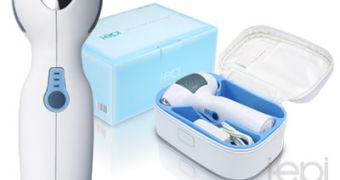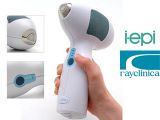If you thought personal handheld lasers were something you could only see in Star Trek or some other cult sci-fi movie series, guess again. Starting this summer, handheld lasers will step down from movie posters and enter our day to day lives, making their way onto the American market in the form of medical devices for cosmetic treatments at home. And since unwanted hair removal is undoubtedly one of the most popular cosmetic services out there, the first personal cosmetic lasers - which are set to his stores and doctors' offices next month - will help the lucky women (and men) who can afford them in their fight for achieving long-lasting removal of any unwanted hair.
Such devices aren't exactly news, if we take into account the fact that they have been on sale in Japan ever since 2005. The people behind this technology faced a triple challenge: make the cosmetic laser devices safe for widespread consumer use, make them powerful enough to function effectively, and at the same time keep their prices within affordable boundaries. The device, which goes on sale for the first time in the U.S. next month, has been dubbed "Tria" and is produced by SpectraGenics Inc. of Pleasanton, Calif., the same company that has initially put a similar device on the Japanese market three years ago. Tria uses diode-laser technology, successfully used in professional hair removal for over 10 years, and comes with a rather hefty price tag of $995.
Not surprisingly, a battle is already raging on the cosmetic laser device market. Before it was even launched, Tria promptly managed to score a rival - a device called Silk'n, manufactured by the Israeli company Home Skinovations Ltd. Silk'n will be launched at a meeting of the American Society for Laser Medicine and Surgery this very week. It uses a different hair removal technology known as "pulsed light" and sells for $800. It still can't be referred to as "cheap", but in a world in which consumer spending on medical procedures to improve appearance is growing at an incredibly fast rate, such devices are expected to become hugely popular in the very near future.
There are, of course, several downsides to the technologies used by both Tria and Silk'n. First of all, the two devices are best used on small areas, as they work slower and are less powerful than the professional devices used in spas and dermatology offices. They will work on lower legs or bikini lines, but will do little good to men's backs for example. Also, laser and light-based technologies both work by targeting and eliminating pigment in the hair, which means that African-Americans and people with darker skin in general won't be able to use them, as the laser might mistake dark or tanned skin for hair and cause severe burns. Finally, the FDA has not cleared Tria and Silk'n for use on the face. However, for those of you who see hair as a nuisance worth about $1,000, these devices are music to your ears - so you might want to get yourselves one and watch the magic happen.

 14 DAY TRIAL //
14 DAY TRIAL // 
